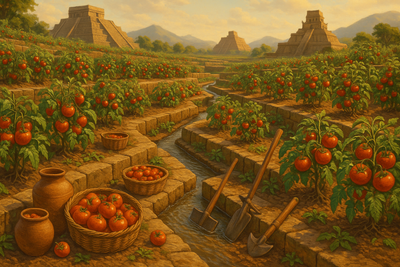The Tomato Journey
From a wild Andean fruit to a staple culinary ingredient around the world
7000 BCE
Wild origins in South America
Wild tomatoes first appeared in the Andes Mountains of Peru, Ecuador, and northern Chile. These early tomatoes were small, cherry-sized fruits that grew naturally in the wild.

500 BCE
The Aztec Cultivation
The Aztecs were among the first to cultivate tomatoes, which they called "tomatl." They developed larger varieties and incorporated them into their cuisine, creating the first versions of salsa.

1519
The Spanish conquest and introduction into Europe
The Spanish conquistadors brought tomato seeds to Europe. Initially, they were cultivated as ornamental plants, but Europeans were wary of the fruit because of its resemblance to the poisonous nightshade.

1600s
Adoption in Italy
Italy was the first European country to incorporate tomatoes into its cuisine. The warm climate was perfect for their cultivation, and tomatoes became an essential ingredient in Italian cuisine, giving rise to the first tomato-based pasta sauces.

Today
Staple Food Worldwide
Tomatoes are currently the world's most popular vegetable, with an annual production of over 180 million tons. From heirloom varieties to genetically improved cultivars, tomatoes continue to evolve and remain essential in cuisines around the world.


